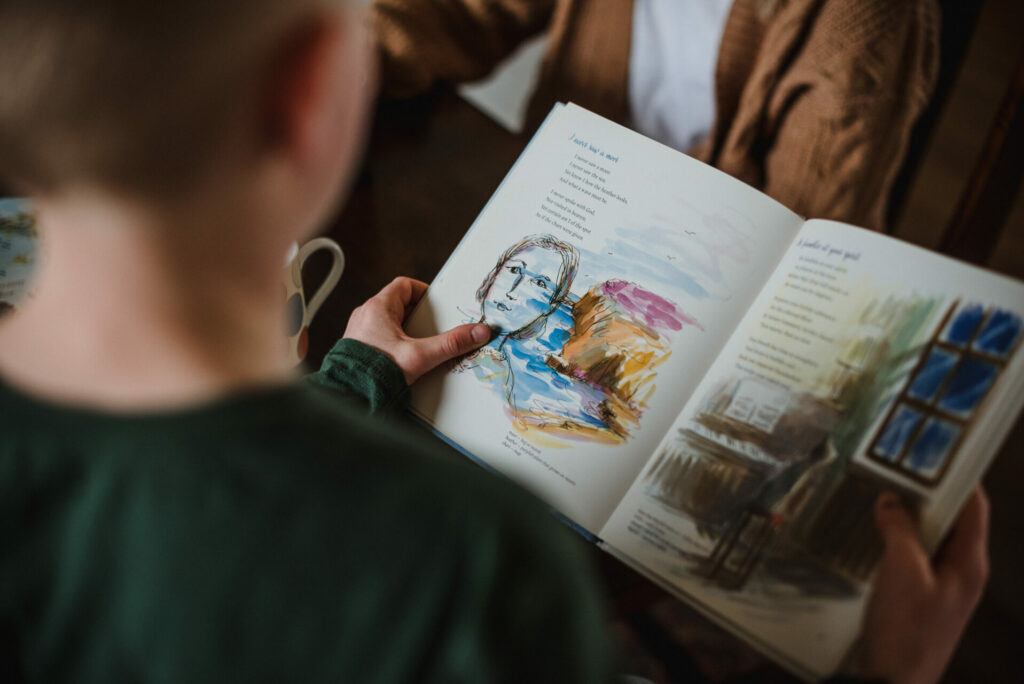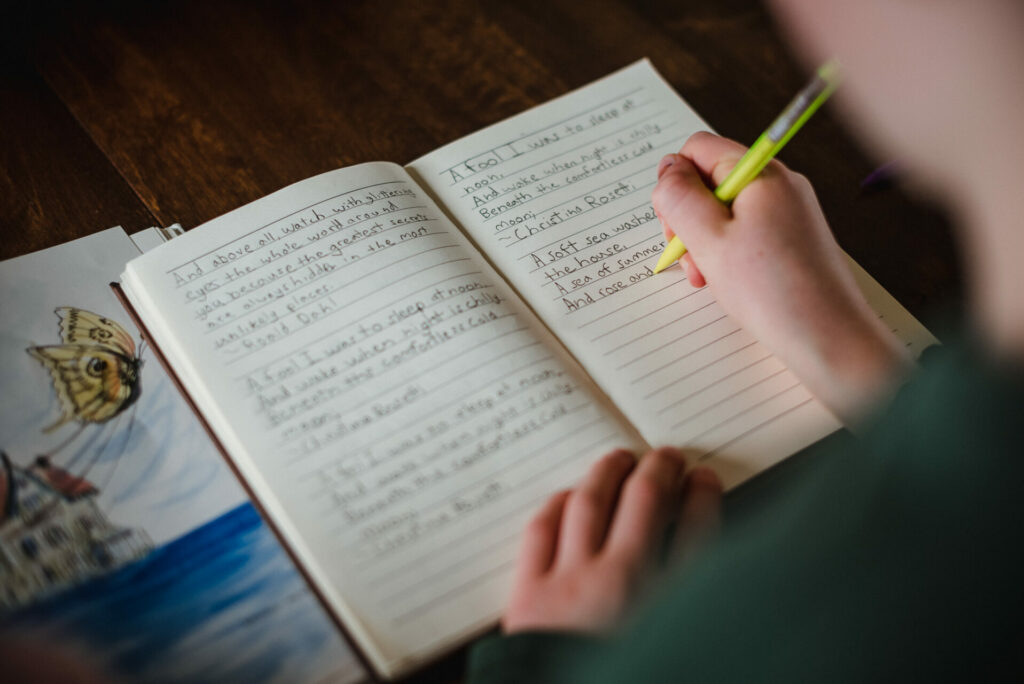What is Recitation?
All children have it in them to recite; it is an imprisoned gift waiting to be delivered… even the most commonplace child steps forth the child-artist, a delicate sprite, who shall make you laugh and make you weep.
I hope that my readers will train their children in the art of recitation; in the coming days, more even than in our own, will it behove every educated man and woman to be able to speak effectively in public; and, in learning to recite you learn to speak.
Charlotte Mason
Charlotte Mason describes recitation as ‘the children’s art’. Recitation comes naturally for children. The goal of recitation is to understand and communicate the nuance of the words in a chosen passage and to speak beautiful works beautifully. Memorization is the fruit, not the goal, of recitation.
Recitation passages should be drawn from poetry, hymns, literature, and scripture. Use short, simple passages and poems when introducing recitation. Gradually increase the passage length.
Eventually students should be involved in choosing their own recitation passages. Parents can guide students with the question: What is worthy of recitation? It is important to provide students with rich and varied recitation resources.
5 Recitation Tips
- Students should stand with good posture when reciting.
- The focus of recitation should be communicating the meaning and emotion of the passage.
- Encourage eye contact to avoid reliance on written text, increasing natural memorization.
- Recitation should not be laborious or hurried. Students should focus on pronunciation and speaking clearly.
- Students should choose their own recitation passages whenever possible, resulting in increased engagement.
Recording a video or voice memo of student recitation is a delight!
Here is a sample of a ten year old student reciting a poem by Emily Dickinson.
Suggested Posts
- Students should stand with good posture when reciting.
- The focus of recitation should be communicating the meaning and emotion of the passage.
- Encourage eye contact to avoid reliance on written text, increasing natural memorization.
- Recitation should not be laborious or hurried. Students should focus on pronunciation and speaking clearly.
- Students should choose their own recitation passages whenever possible, resulting in increased engagement.
Recording a video or voice memo of student recitation is a delight!
Here is a sample of a ten year old student reciting a poem by Emily Dickinson.


